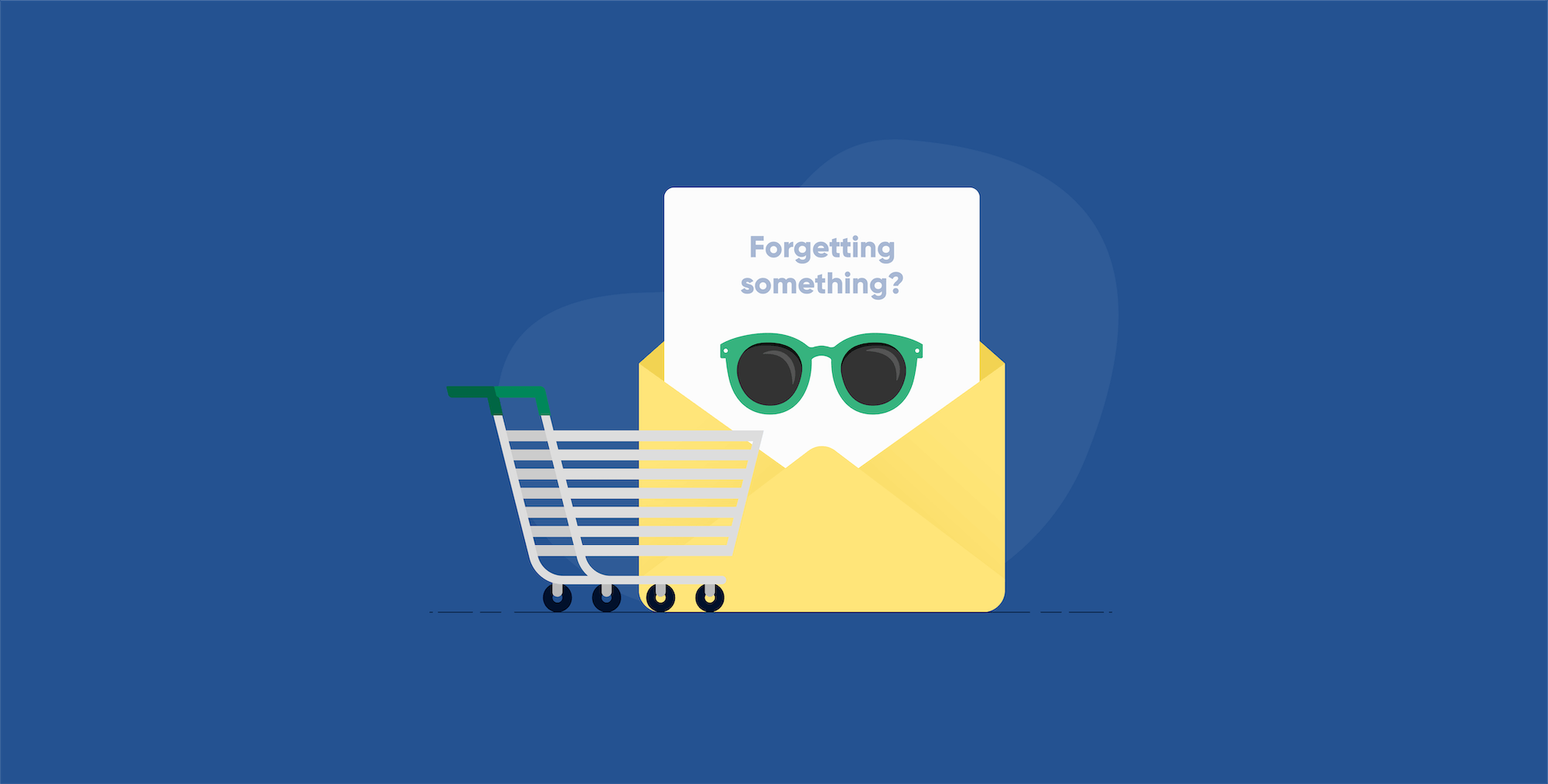In a previous blog post, we listed abandoned-cart campaigns as one of the most effective campaigns you can run as an email marketer. Now, we’ll go into more depth with facts and creative examples to inspire you to test them for yourself.
3 reasons why you should care about abandoned carts
- It happens to everybody. Customers abandon roughly 7 of every 10 carts. Some customers come back on their own to redeem their carts, but others need a nudge. Follow-up emails can help you redeem an average 11% of those abandoned carts.
- You’re losing money. This is the most obvious casualty when someone puts items in a cart but then leaves your site without completing checkout. But, it also means you must keep spending money to attract new customers instead of letting your products and service do the repeat selling for you.
- Lost customer relationships. Your regular customers who leave your site without checking out might well come back on their own, but you can’t expect the same behavior from customers who are new to your brand. That means you lose the opportunity to build your brand with them.
Bonus: ShippingEasy’s abandoned-cart follow-up email templates make it easy for you to get started with this email campaign. Keep reading to see the awesome email one ShippingEasy client sends to her customers.
These are the top 10 reasons why shoppers leave without completing checkout, according to a report from Barilliance, which combined several studies to come up with a master list:
- High or unexpected shipping costs
- Forced to create an account
- Just researching
- Concerns about payment security
- Long and confusing checkout
- Couldn’t find a coupon code
- No express shipping
- Website had errors or crashed
- Unsatisfactory return policy
- Customer’s credit card declined
The solution: send email reminders
Your business goal is to bring cart-abandoners back to your site to buy from you instead of someone else. Email allows you to reach out directly to your customers with a carefully crafted appeal designed to answer questions, reduce FUD (fear, uncertainty and doubt) and send them straight back to their carts.
An effective follow-up email has three attributes: timing, content, and tone.
Timing: How long should you wait before sending your follow-up email? It depends on your customers, but the rule of thumb is to send it within 24 hours after your customer abandons a cart. Try different times to see which one gets the most conversions.
Content: Provide as much detail as possible (product names, images, unit and total prices, shipping and other costs). Include customer support phone numbers and links to answer questions or resolve problems.
Tone: The reasons why people abandon their carts mostly deal with something other than product dissatisfaction. Use a problem-solving approach. But, add a sense of urgency that aims to persuade customers to hurry back before they miss out on their choices.
The email below from RhoadsRoast Coffee shows you how to combine these three attributes into an effective abandoned-cart follow-up email using ShippingEasy’s email template.
The email, sent just a couple of hours after abandonment, includes product details, adds urgency (“We can’t guarantee they will still be available when you decide to pull the trigger”) and provides customer-service contact info to help shoppers solve problems.
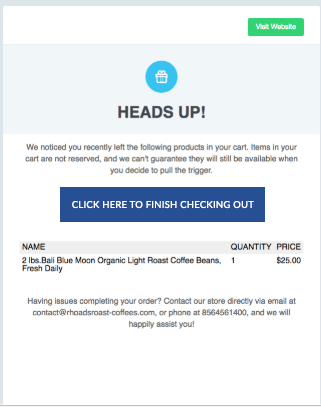
7 effective abandoned-cart follow-up emails
- Use attractive imagery and tone that reflects your brand and gets your customers excited all over again to come back and finish their purchases. This Modcloth email uses a stunning product image – both size and color make an impact. The email headline gets the point across, too!
- Brand your messages. Include brand images and colors to remind fickle customers who you are. The bright yellow Burt’s Bees brand color is all over this email. We also loved the product recommendations (best sellers and top-rated products) for shoppers who still want to browse.
- Recommend something else. For undecided shoppers, lure them back with product recommendations that might suit them better. Parachute Home’s purchase suggestions don’t distract from the hero image of the item in the cart. Plus, we love the clever headline: “I noticed you noticing me.”
- Create urgency. Motherhood sends a series of follow-up emails, both of which use FOMO (fear of missing out) to nudge shoppers to come back and check out. The first email warns that their cart items could sell out. The second is designed to pique shoppers’ curiosity after the cart expires. We love the twist on the typical cart call to action, too. Instead of “Buy now” or “Go to cart,” it says “Recreate my cart.”
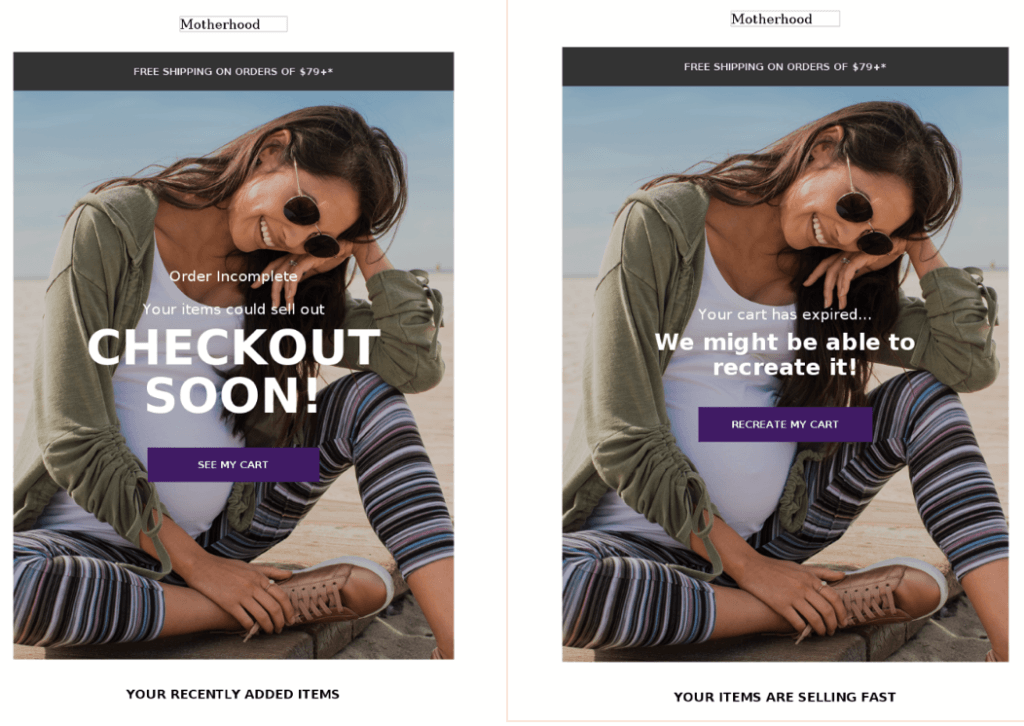
- Offer an incentive. This is a tough issue. Should you try to bribe customers to come back? Some experts say that trains customers to wait for a sweeter deal. But if you want to build sales, an incentive might do the trick. This email from Zalando alerts the customer to a price drop, which could be enough incentive to bring them back to buy.
- Offer to complete the purchase in another channel. This is an excellent approach if you sell complex products that your customer might need to chat about to build confidence. Prescription eyewear like that in this GlassesUSA email is a perfect example, giving the customer the chance to finish up by phone. Note how the email focuses attention on the customer-service angle with an attention-getting headline and a light-gray background on the copy block.
- Personalize it. This Betabrand email does something we’ve not seen in other messages. It adds the customer’s photo from a linked email account to build trust. We also loved this email’s conversational headline (“Weren’t you in the middle of something?”). Along with the headline in another follow-up email (“Why did you leave me?”), they add some whimsy to the transactions.
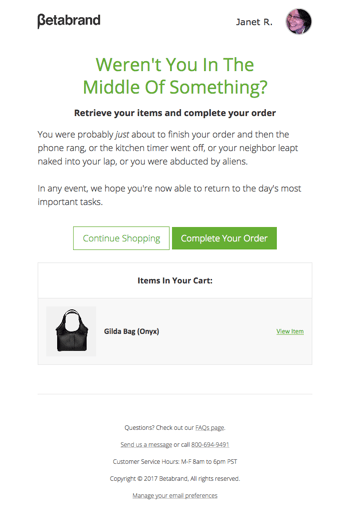
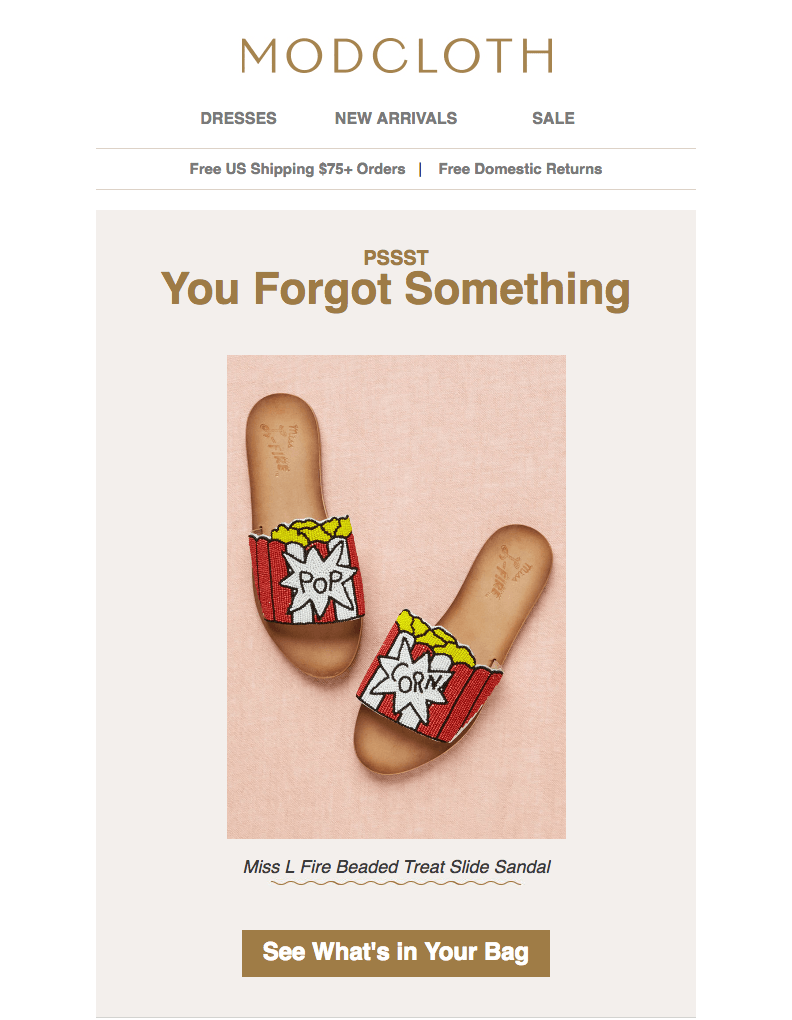
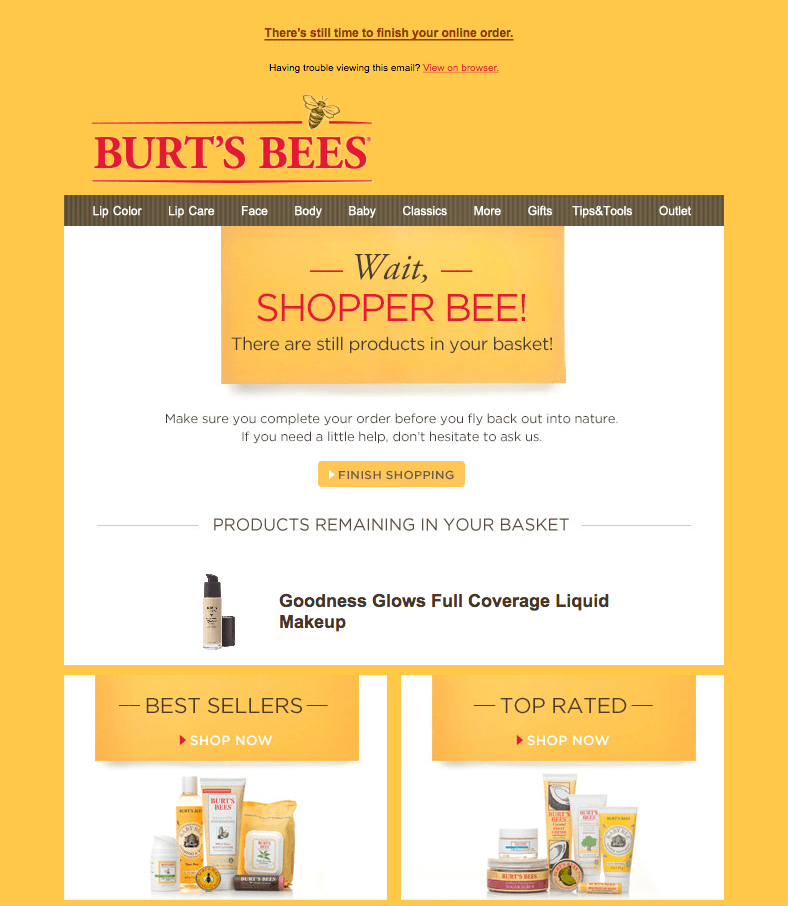
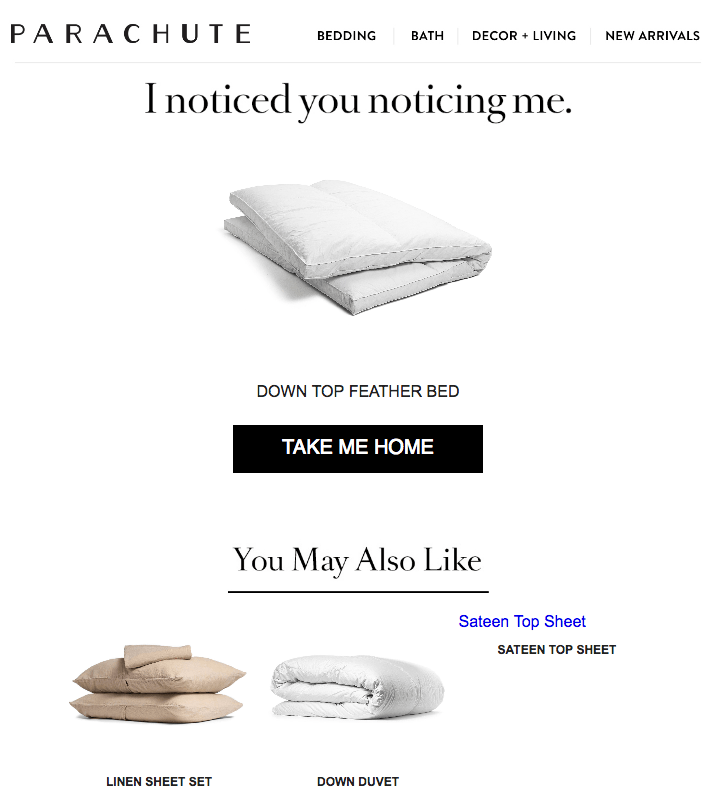
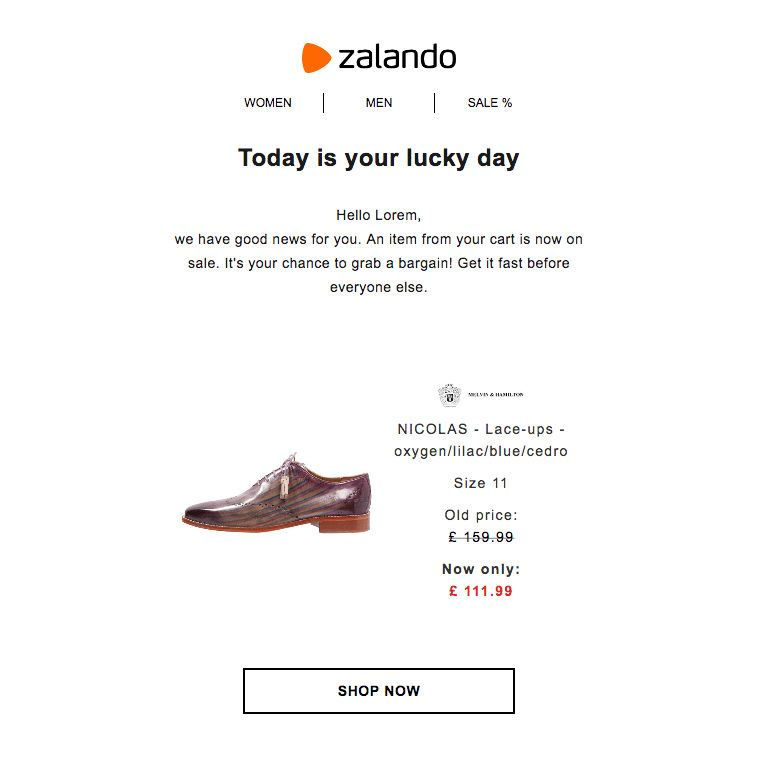
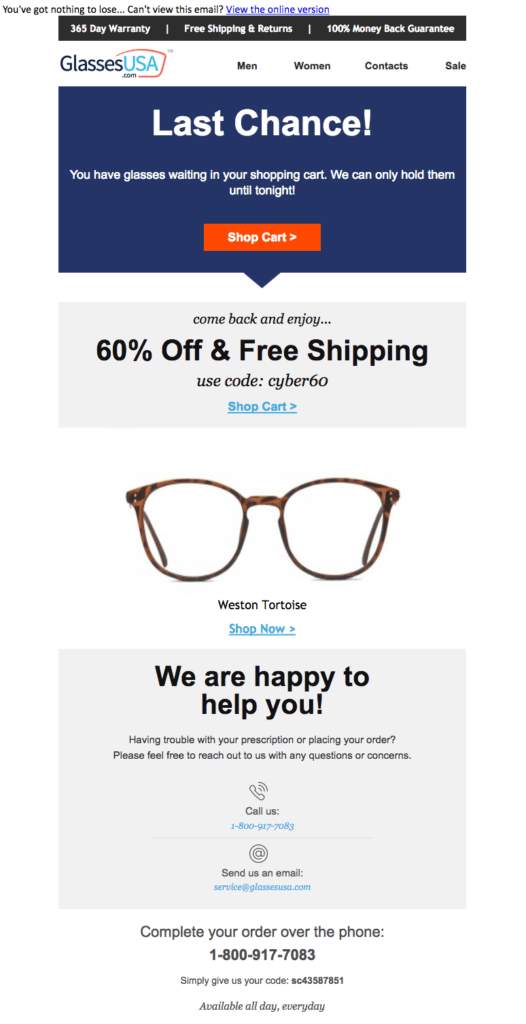
Don’t forget the inbox!
You can have the world’s best follow-up email, but if your customer doesn’t notice your message in the inbox, you’re out of luck. Follow these two guidelines for an attention-getting message:
- Always use your brand name in the sender line. We could write this rule another way, too: “Never put an email address in the ‘from’ line.” It looks spammy and makes your reader guess who really sent the email. Avoid using a person’s name, too, unless the sender is a customer-service person who handled a contact personally. In that case, add your brand (“Mary Jones, BrandX Customer Service).
- Use a clear, specific subject line. Refer to the abandoned cart specifically instead of using a vague subject line such as “Your cart” or “Your order.” Here are some suggestions:
- This Item is Still Available
- Your cart awaits!
- [NAME], did you forget something?
- Lucky you! An item in your shopping cart
- Complete Your Order In Five Minutes
- Forget something? We saved your cart for you
- Your cart is one click away
- What happened to your cart?
- You left your [product name] behind!
- Last chance to SAVE on items in your cart!
- We are holding your cart for 24 hours.
Ready to get started?
We hope we’ve inspired you to learn more about sending abandoned-cart follow-up emails, which are easy to create using ShippingEasy’s Customer Marketing platform. We would love to help you get started or take your present cart-abandonment program to a higher level. Give our tool a try!
Jack Ship
Latest posts by Jack Ship (see all)
- E-Commerce Shipping Solutions You Should Consider for Your Site - February 28, 2021
